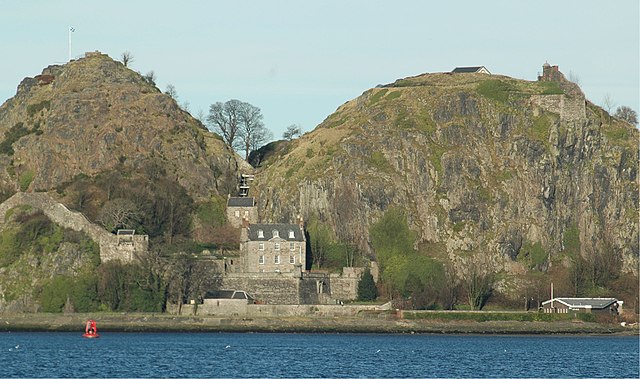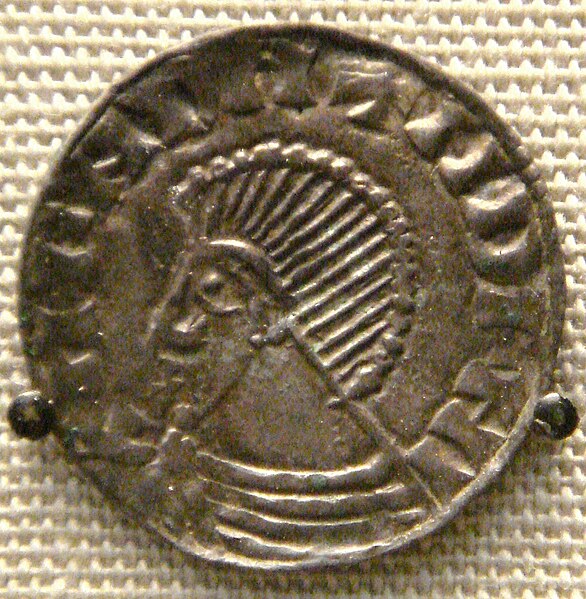Guðrøðr Óláfsson was a twelfth-century ruler of the kingdoms of Dublin and the Isles. Guðrøðr was a son of Óláfr Guðrøðarson and Affraic, daughter of Fergus, Lord of Galloway. Throughout his career, Guðrøðr battled rival claimants to the throne, permanently losing about half of his realm to a rival dynasty in the process. Although dethroned for nearly a decade, Guðrøðr clawed his way back to regain control of a partitioned kingdom, and proceeded to project power into Ireland. Although originally opposed to the English invasion of Ireland, Guðrøðr adeptly recognised the English ascendancy in the Irish Sea region and aligned himself with the English. All later kings of the Crovan dynasty descended from Guðrøðr.

A king gaming piece of the so-called Lewis chessmen. Comprising some four sets, the pieces are thought to have been crafted in Norway in the twelfth- and thirteenth centuries. They were uncovered in Lewis in the early nineteenth century. Some of the pieces may have arrived in the Isles as a result of Guðrøðr's return from Norway.
Image a
Image b
Nineteenth-century facsimile of the charter of Kelso Abbey, witnessed by Guðrøðr whilst in exile in 1159. His name and title reads: "Godredo Rege Insularum"
The Kingdom of the Isles was a Norse-Gaelic kingdom comprising the Isle of Man, the Hebrides and the islands of the Clyde from the 9th to the 13th centuries AD. The islands were known to the Norsemen as the Suðreyjar, or "Southern Isles" as distinct from the Norðreyjar or Northern Isles of Orkney and Shetland. In Scottish Gaelic, the kingdom is known as Rìoghachd nan Eilean. The territory is sometimes called the Kingdom of Mann and the Isles, although only some of the later rulers claimed that title. The historical record is incomplete, and the kingdom was not a continuous entity throughout the entire period. At times the rulers were independent of external control, although for much of the period they had overlords in Norway, Ireland, England, Scotland or Orkney. At times there also appear to have been competing claims for all or parts of the territory. The islands have a total land area of over 8,300 square kilometres (3,205 sq mi) and extend for more than 500 kilometres (310 mi) from north to south.

Signature page from the Annals of the Four Masters
Folio 32v of the Book of Kells which may have been produced by the monks of Iona and taken to Ireland for safekeeping after repeated Viking raids of the Hebrides.
Modern Dumbarton Castle, the site of the 9th-century siege by the Uí Ímair
A posthumous "Sihtric" coin from the British Museum, minted at Dublin c. 1050








